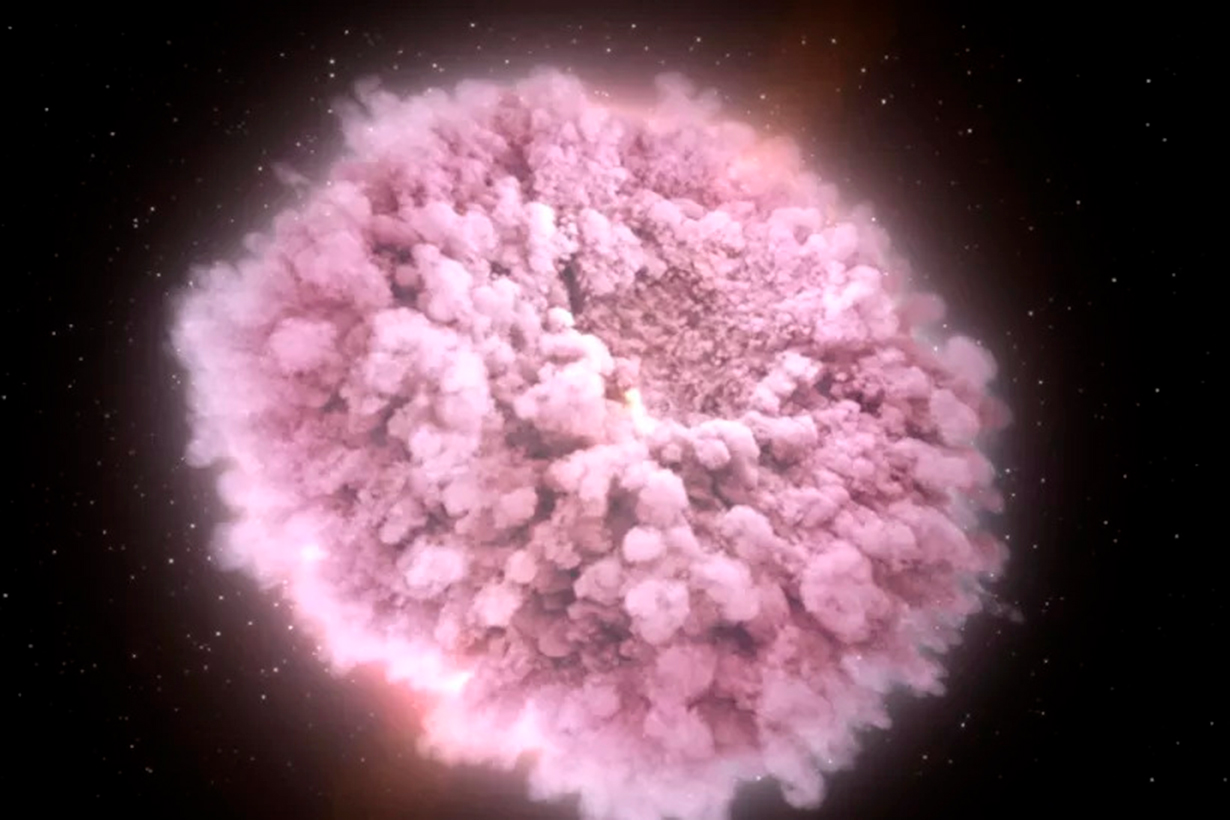CLOSE
About Elements
TANAKA is a leading company in the field of precious metals.
Advanced materials and solutions that support societal progress, the development stories behind them, the voices of engineers, and our management philosophy and vision—
Elements is an online media platform that shares insights that lead to a better society and a more prosperous future for the planet under the slogan “Mastering Precious Metals.”

Precious metals on the Earth were born from collision of neutron stars !?

Paul M. Sutter is an astrophysicist at SUNY Stony Brook and the Flatiron Institute, host of “Ask a Spaceman” and “Space Radio,” and author of “How to Die in Space.”
The universe is pretty good at smashing things together. All kinds of stuff collides — stars, black holes and ultradense objects called neutron stars.
And when neutron stars do it, the collisions release a flood of elements necessary for life.
Let’s explore how astronomers used subtle ripples in the fabric of space-time to confirm that colliding neutron stars make life as we know it possible.
Just about everything has collided at one point or another in the history of the universe, so astronomers had long figured that neutron stars — superdense objects born in the explosive deaths of large stars — smashed together, too. But starting about a decade ago, astronomers realized that the collision of neutron stars would be particularly interesting.
For one, a neutron star collision would go out with a flash. It wouldn’t be as bright as a typical supernova, which happens when large stars explode. But astronomers predicted that an explosion generated from a neutron star collision would be roughly a thousand times brighter than a typical nova, so they dubbed it a kilonova — and the name stuck.
As the name suggests, neutron stars are made of a lot of neutrons. And when you put a bunch of neutrons in a high-energy environment, they start to combine, transform, splinter off and do all sorts of other wild nuclear reaction things.
The birth of elements
With all the neutrons flying around and combining with each other, and all the energy needed to power the nuclear reactions, kilonovas are responsible for producing enormous amounts of heavy elements, including gold, silver and xenon. Together with their cousins, supernovas, kilonovas fill out the periodic table and generate all the elements necessary to make rocky planets ready to host living organisms.
In 2017, astronomers witnessed their first kilonova. The event occurred about 140 million light-years from Earth and was first heralded by the appearance of a certain pattern of gravitational waves, or ripples in space-time, washing over Earth.
These gravitational waves were detected by the Laser Interferometer Gravitational-Wave Observatory (LIGO) and the Virgo observatory, which immediately notified the astronomical community that they had seen the distinct ripple in space-time that could only mean that two neutron stars had collided. Less than 2 seconds later, the Fermi Gamma-ray Space Telescope detected a gamma-ray burst — a brief, bright flash of gamma-rays.
A flurry of scientific interest followed, as astronomers around the world trained their telescopes, antennas and orbiting observatories at the kilonova event, scanning it in every wavelength of the electromagnetic spectrum. All told, about one-third of the entire astronomical community around the globe participated in the effort. It was perhaps the most widely described astronomical event in human history, with over 100 papers on the subject appearing within the first two months.
Kilonovas had long been predicted, but with an occurrence rate of 1 every 100,000 years per galaxy, astronomers weren’t really expecting to see one so soon. (In comparison, supernovas occur once every few decades in each galaxy.)
And the addition of gravitational wave signals provided an unprecedented glimpse inside the event itself. Between gravitational waves and traditional electromagnetic observations, astronomers got a complete picture from the moment the merger began.
That kilonova alone produced more than 100 Earths’ worth of pure, solid precious metals, confirming that these explosions are fantastic at creating heavy elements.
In short, the gold in your jewelry was forged from two neutron stars that collided long before the birth of the solar system.
The death of modified gravity
But that wasn’t the only reason the kilonova observations were so fascinating. Albert Einstein’s theory of general relativity predicted that gravitational waves travel at the speed of light. But astronomers have long been trying to develop extensions and modifications to general relativity, and the vast majority of those extensions and modifications predicted different speeds for gravitational waves.
With that single kilonova event, the universe gave us the perfect place to test this. The gravitational wave signal and the gamma-ray burst signal from the kilonova arrived within 1.7 seconds of each other. But that was after traveling over 140 million light-years. To arrive at Earth that close to each other over such a long journey, the gravitational waves and electromagnetic waves would have had to travel at the same speed to one part in a million billion.
That single measurement was a billion times more precise than any previous observation, and thus wiped out the vast majority of modified theories of gravity.
No wonder a third of astronomers worldwide found it interesting.
Learn more by listening to the episode “What’s so groovy about gravitational waves? (Part 2)” on the “Ask A Spaceman” podcast, available on iTunes and askaspaceman.com. Ask your own question on Twitter using #AskASpaceman or by following Paul @PaulMattSutter and facebook.com/PaulMattSutter. Follow us on Twitter @Spacedotcom and on Facebook.
This article was written by Paul Sutter from Space and was legally licensed through the Industry Dive publisher network. Please direct all licensing questions to legal@industrydive.com.







